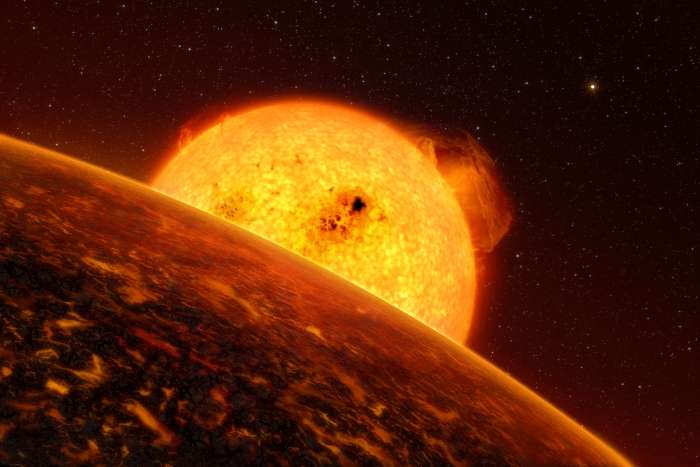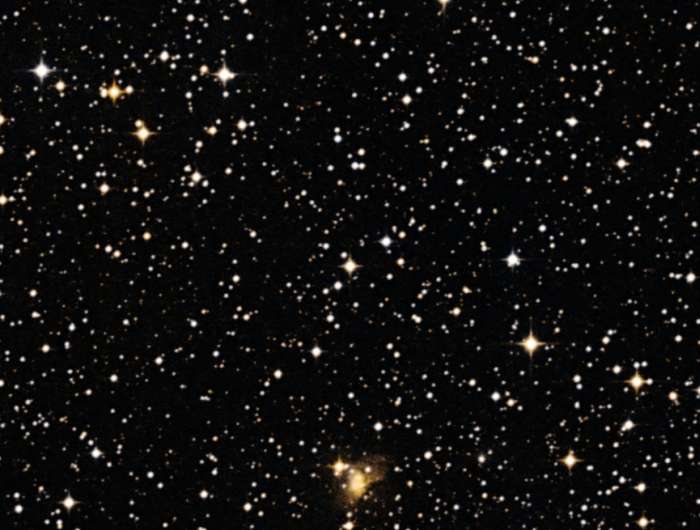Stellar atmosphere can be used to predict the composition of rocky exoplanets

In two recently published articles, researchers from Instituto de Astrofísica e Ciências do Espaço (IA) show that the ratio of some heavy elements in a star, like Magnesium (Mg), Silicon (Si) and Iron (Fe), have a crucial influence in the composition of rocky exoplanets.
In several previously published articles, it is suggested that the ratio of Fe, Mg and Si in the Sun is similar to that of the Earth, Venus, Mars and some meteorites. Thus, in the Solar System, the relative abundance of these elements in the Sun's photosphere can be used to derive the composition and structure of rocky exoplanets.
IA's team used high resolution spectra, from different telescopes, to determine the stellar parameters and ratios of several these elements, in three stars with known exoplanets – CoRoT-7, Kepler-10 and Kepler-93. Results show that, in the analyzed exoplanets and their host-stars, we see the same type of relation that was measured between the chemical compositions of Solar System bodies.
Nuno Cardoso Santos (IA & University of Porto): "The data shows that a detailed analysis of the chemical composition of stars with planets is important, not only to determine the architecture of planetary systems, but also to infer the internal structure, composition, and even habitability potential of individual planets."
These articles also show that the Mg/Si ratio can have a pivotal role in the structure and chemical composition of terrestrial exoplanets. This fraction is thus the key to measure some characteristics of exoplanets, like mass or radius.
Since these elements are forged in the nucleus of stars, or in supernovae explosions, Vardan Adibekyan (IA and University of Porto) argues that: "Its relative abundance depends on where in and when, through the galaxy's chemical evolution, were they formed."

He adds: "It is interesting that most of the low-mass planet hosting stars that we observed show higher ratio of Mg/Si that is observed in the photosphere of our Sun. More interestingly, this important mineralogical ratio probably increases with time, leading us to conclude that the ancient planets were probably hosting stars that had a much different composition than the Sun, which should be reflected in the composition and structure of the rocky planets that they use to host."
The team also produced a third article about habitability of exoplanets. The article came about after because of the discussions between researchers of different fields, during the international conference Habitability in the Universe: From the Early Earth to Exoplanets, organized by IA earlier this year in Porto (Portugal).
About this work, Adibekyan says that: "The Universe is full of surprises and there is certainly no shortage of interesting questions. But I think exoplanetologists are drawing closer to the answer to some of the oldest and most daring questions of humanity: Are we alone in the Universe and what is our place in it?"
More information: "Constraining planet structure from stellar chemistry: the cases of CoRoT-7, Kepler-10, and Kepler-93" (DOI: 10.1051/0004-6361/201526850
"From stellar to planetary composition: Galactic chemical evolution of Mg/Si mineralogical ratio" (DOI: 10.1051/0004-6361/201527059
"Which type of planets do we expect to observe in the Habitable Zone?" arXiv. 1509.02429.
Provided by Instituto de Astrofísica e Ciências do Espaço



















